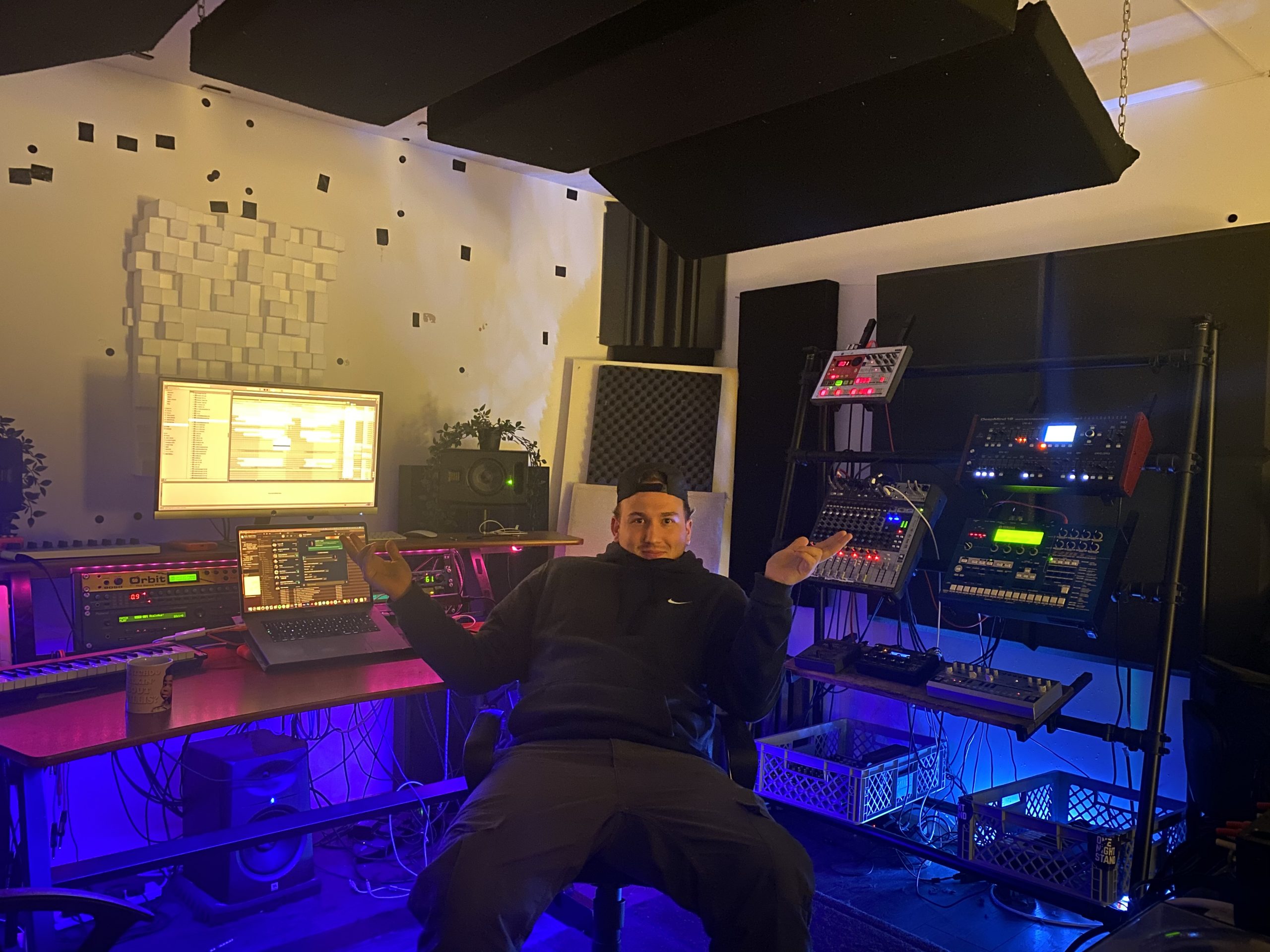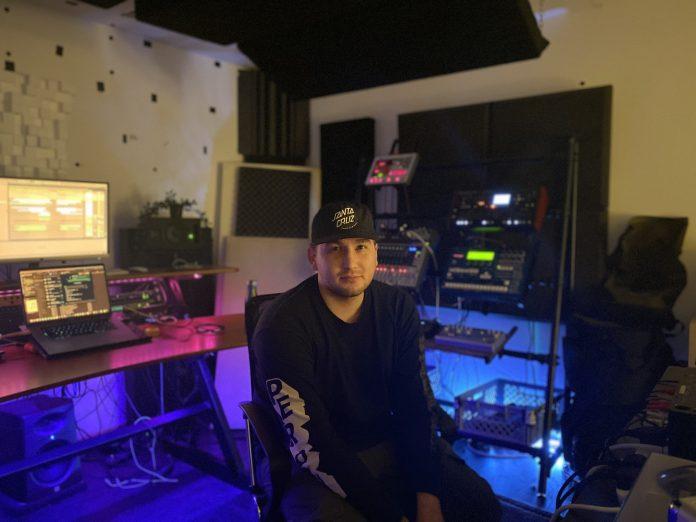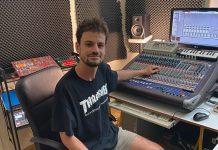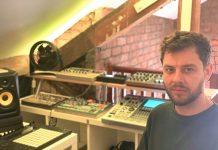British artist Adam Monti aka ADMNTi is a staple in the London underground and regularly turns out for the likes of Half Baked. This is of course partly down to the fact he is a badman selector but of course he has some serious beats in his locker too. His productions have found homes on the likes of Subsequent, Dansu Discs and Beeyou Records to name just a few.
So for the next tutorial from The Source Adam was next to impart his studio science. This time he gave a very comprehensive video on his use of mixing drums and how to get that unique sound that would make any regular drum look sound original…
Can you give us a lowdown on your tutorial for The Source?
When Michael asked me to contribute to the platform, I wasn’t sure what would be most useful to the majority of people. I find that getting stuck in the loop of drums is an issue that a lot of people I speak to have when learning so what I have shown is how to expand the drums in a project with simple and easy techniques that aren’t too strenuous or complicated, mainly by using effects that contribute to the main percussive layers.
There is a fair bit of use of loops, is this a central part to your tracks?
When it comes to building my drums, I use a combination of loops and one shots as I find this an easy way to get a groove going. I also send MIDI to the 808 Clone in our studio as well as the Yamaha RM1X. When it comes to the more musical parts of the project (effects, synths, pads and other sequences), I tend to automate these into 6-7 minute long recordings which I then incorporate accordingly when in arrangement view.

At what point in your production journey did you join the dots to this way of effecting your tracks?
Drums can be the most repetitive part of the music that we make. It dawned on me a few years ago that I can make these more interesting by using various layers, as well as what I would call ‘under-drums’ which sit behind in the mix (usually reverberated and effect heavier). This often compliments the other elements in the music.
You use the Soundtoys effect rack in your video, have you found another way to get the same results purely in Ableton?
There are certainly other ways to do this as the Soundtoys Effect rack consists of modules which create varios delays, reverbs, filters, phasers and flangers. To replicate these effects, you could use the Ableton stock effect units and map LFO’s to various parameters of these modules. One thing to remember is that things will sound different depending on what order the effect units are in and how they are grouped. Return channels are also a great way of recording effects on pre existing tracks and groups, as well as just running them as standard send and returns.
Is there any other hardware options of getting this sound form the loops?
There are some wicked effect units out there in the world of hardware. We have a Lexicon MX200 which allows multiple effect options and is a good starting point for external effect units. Stephan Bazbaz and I had a jam once and he brought his Earthquaker Rainbow Machine along which blew my mind. The Boss RE-20 Space Echo is amazing too. These three are all pretty solid effect units that don’t break the bank too much, but of course there are much bigger and more expensive pieces of kit that will do a lot more.
Can we expect to hear your track any time soon on a dance-floor?
Not this one in particular, but I have a number of EP’s lined up on various labels which will be seeing the light of day within the next year or so. Some of these imprints are close to my heart, some are labels that I’ve followed ever since I first started buying records many years ago and some are headed up by newer friends.
View this post on Instagram
More info on ADMNTi
Facebook | Resident Advisor | SoundCloud | Bandcamp | Discogs
More info on The Source
Instagram | Website




![Premiere: A1 – ADMNTi – Second Hand Sushi [FMS001]](https://trommelmusic.com/wp-content/uploads/2025/04/0038980850_10-218x150.jpg)

![Premiere: 4 – ADMNTI – Soulmate (Julian Anthony For The Soul Mix) [CAPO001] ADMNTI - EP artowkr - including Julian Anthony remix](https://trommelmusic.com/wp-content/uploads/2023/10/COVER-CAPO001-Elisa-Migotto-218x150.jpg)



![Premiere: B1 – Karma – Mi-Mnemonic (Ali Synth Version) [DAMN009]](https://trommelmusic.com/wp-content/uploads/2025/12/1174039-324x235.jpg)
![Premiere: A2 – Sancturu – The Last Romantic [ERROR404-02]](https://trommelmusic.com/wp-content/uploads/2025/12/TAPAERROR404-100x70.jpg)
![Premiere: B1 – Spacekid – Lonely [DAMNLTD002]](https://trommelmusic.com/wp-content/uploads/2025/12/photo_2025-12-07_14-51-16-100x70.jpg)
![Premiere: A1 – Paularner – Narco Dollar Health Care [MCBR007]](https://trommelmusic.com/wp-content/uploads/2025/12/MCRB007_template_Side_A_mockup-100x70.jpg)
![Premiere: 5 – Hustache – Destiny (Topper Remix) [ATRD004]](https://trommelmusic.com/wp-content/uploads/2025/12/ATR004_DEF-Ben-Carew-100x70.jpg)
![Premiere: B2 – Art Fact – Problems (Ruben Mix) [GT9.01]](https://trommelmusic.com/wp-content/uploads/2025/11/1181209b-100x70.jpg)
![Premiere: 3 – Alejandro Cuestas – Noches de Olivar [CVL046]](https://trommelmusic.com/wp-content/uploads/2025/12/BUFADERO-CUESTAS-CALANCHE-Cavilar-100x70.jpg)
![Free Download: AI Robot – Blue Reflection [TFD124]](https://trommelmusic.com/wp-content/uploads/2025/12/image00005-100x70.jpeg)
![Premiere: 1 – Edine – HDF32 [LETSDIGI018]](https://trommelmusic.com/wp-content/uploads/2025/12/Hdf-32-Edine-Music-100x70.jpg)
![Premiere: B1 – Levan Grdzelidze – Prince Of East Side [GRFF021]](https://trommelmusic.com/wp-content/uploads/2025/11/GRFF021-Mockup-B-100x70.jpg)